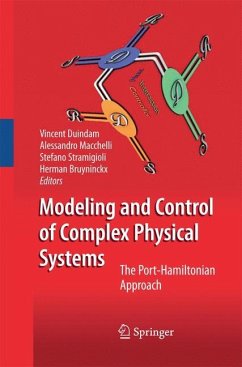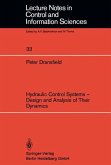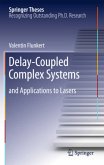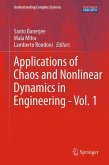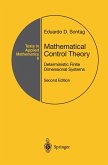Energy exchange is a major foundation of the dynamics of physical systems, and, hence, in the study of complex multi-domain systems, methodologies that explicitly describe the topology of energy exchanges are instrumental in structuring the modeling and the computation of the system's dynamics and its control.
This book is the outcome of the European Project "Geoplex" (FP5 IST-2001-34166) that studied and extended such system modeling and control methodologies. This unique book starts from the basic concept of port-based modeling, and extends it to port-Hamiltonian systems. This generic paradigm is applied to various physical domains, showing its power and unifying flexibility for real multi-domain systems.
This book is the outcome of the European Project "Geoplex" (FP5 IST-2001-34166) that studied and extended such system modeling and control methodologies. This unique book starts from the basic concept of port-based modeling, and extends it to port-Hamiltonian systems. This generic paradigm is applied to various physical domains, showing its power and unifying flexibility for real multi-domain systems.
From the reviews:
"The book is a collection of chapters from experts in the fields of modeling and control using port methods. ... Overall, this book is a valuable summary of the substantial existing literature on port-based modeling and control. For the practitioner, it offers some mathematical tools for analyzing and controlling physical systems. For the mathematician, there is a bounty of interesting areas of application for a certain class of mathematical tools." (Andrew D. Lewis, Mathematical Reviews, Issue 2011 d)
"This book presents a unified framework for modeling, analysis, simulation, and control of complex dynamical systems based on the port-Hamiltonian formalism. Its targeted audience includes control engineers confronted with complex, multi-domain control problems, as well as graduate students in systems and control." (IEEE Control Systems Magazine, Vol. 30, August, 2010)
"The book is a collection of chapters from experts in the fields of modeling and control using port methods. ... Overall, this book is a valuable summary of the substantial existing literature on port-based modeling and control. For the practitioner, it offers some mathematical tools for analyzing and controlling physical systems. For the mathematician, there is a bounty of interesting areas of application for a certain class of mathematical tools." (Andrew D. Lewis, Mathematical Reviews, Issue 2011 d)
"This book presents a unified framework for modeling, analysis, simulation, and control of complex dynamical systems based on the port-Hamiltonian formalism. Its targeted audience includes control engineers confronted with complex, multi-domain control problems, as well as graduate students in systems and control." (IEEE Control Systems Magazine, Vol. 30, August, 2010)

